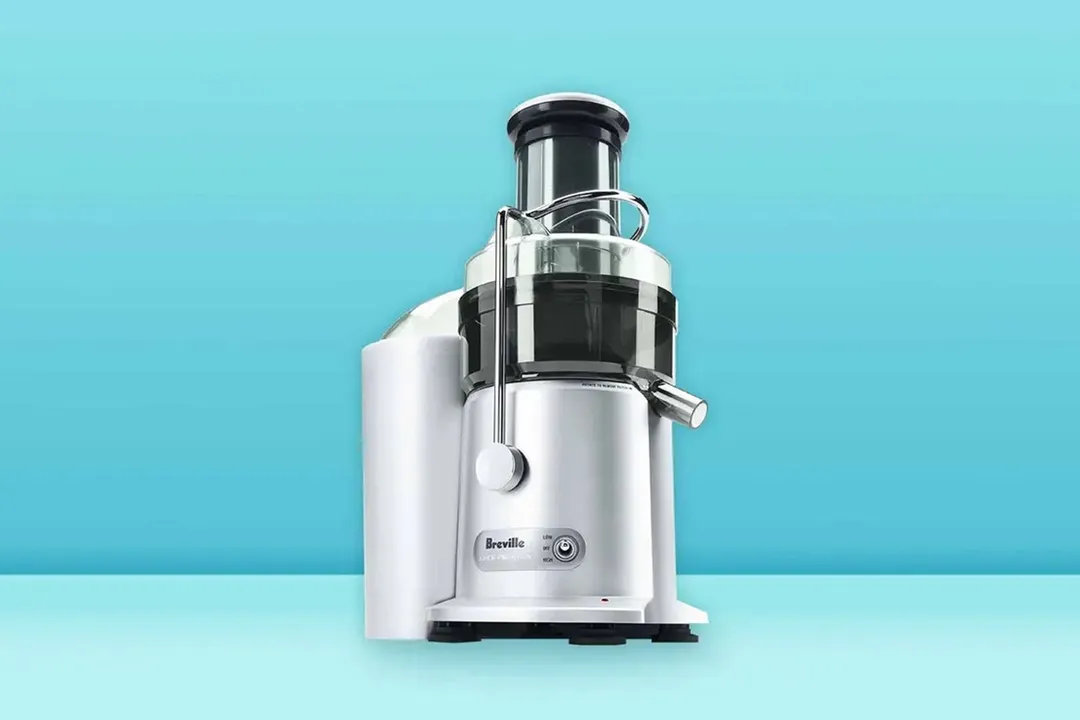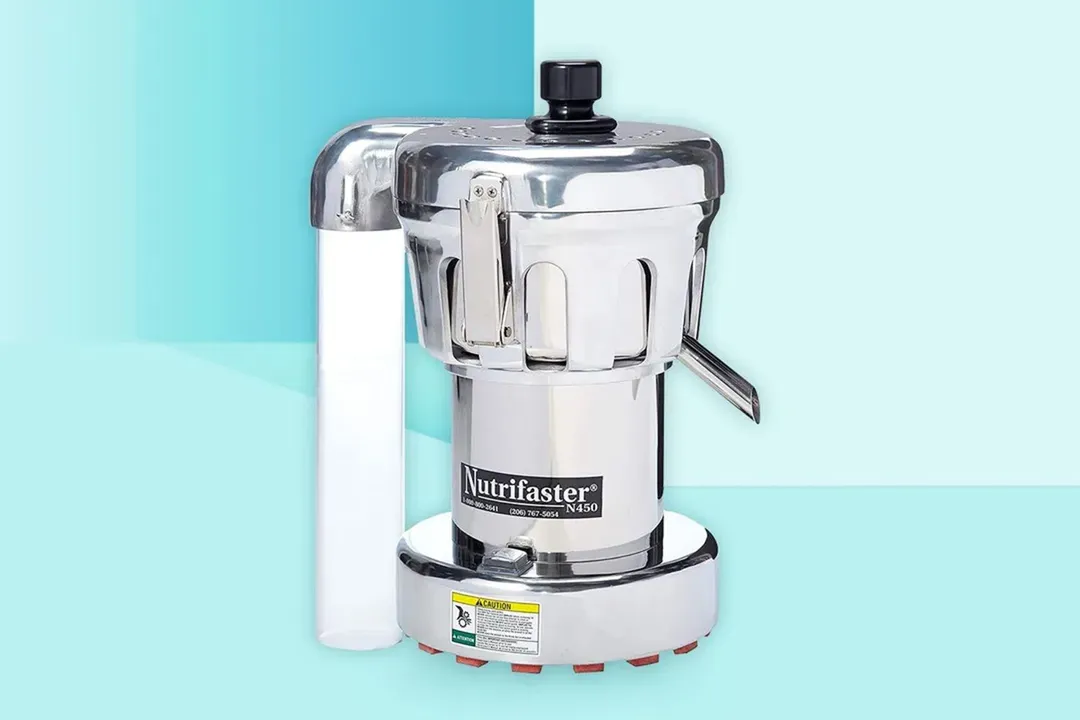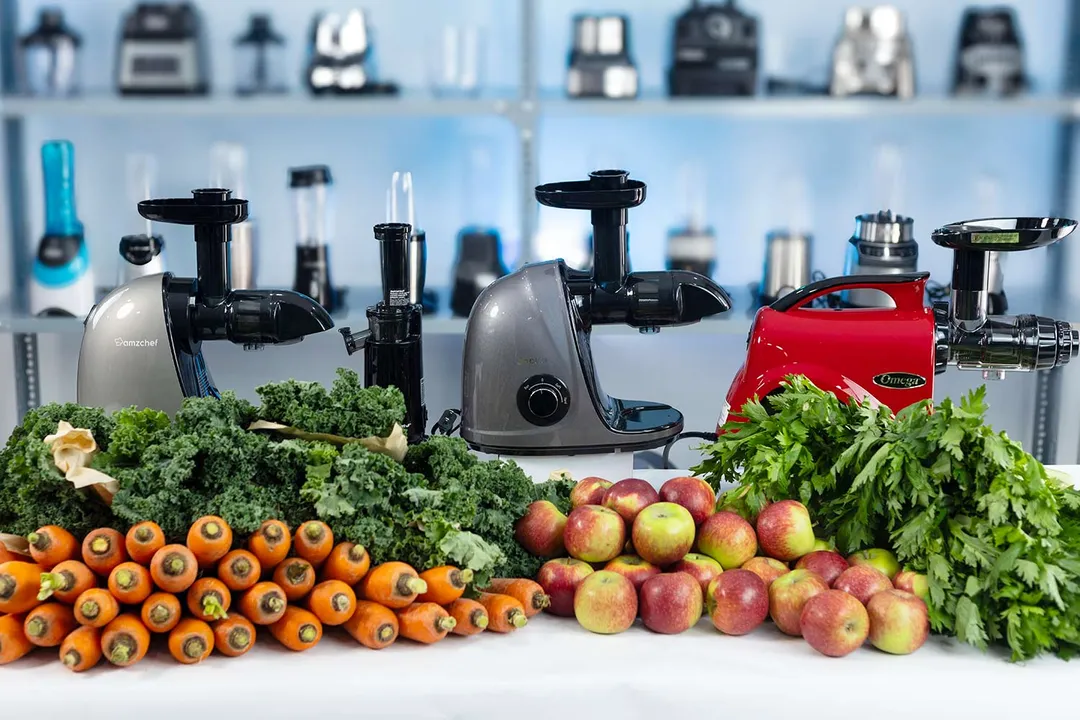Our recommendations are made independently through Research & Testing. We may receive commissions from purchases made via our links.
Fool-proof Tips for Juicing Leafy Greens
See pro tips on how to juice leafy greens! Tips from making a juice base to ‘sandwiching’ leaves between fleshier chunks.
Unlocking the potentials of leafy greens can be a game-changer for your health and wellness journey. Packed with essential nutrients, vitamins, and antioxidants, leafy greens offer a myriad of benefits when incorporated into your daily juicing routine.
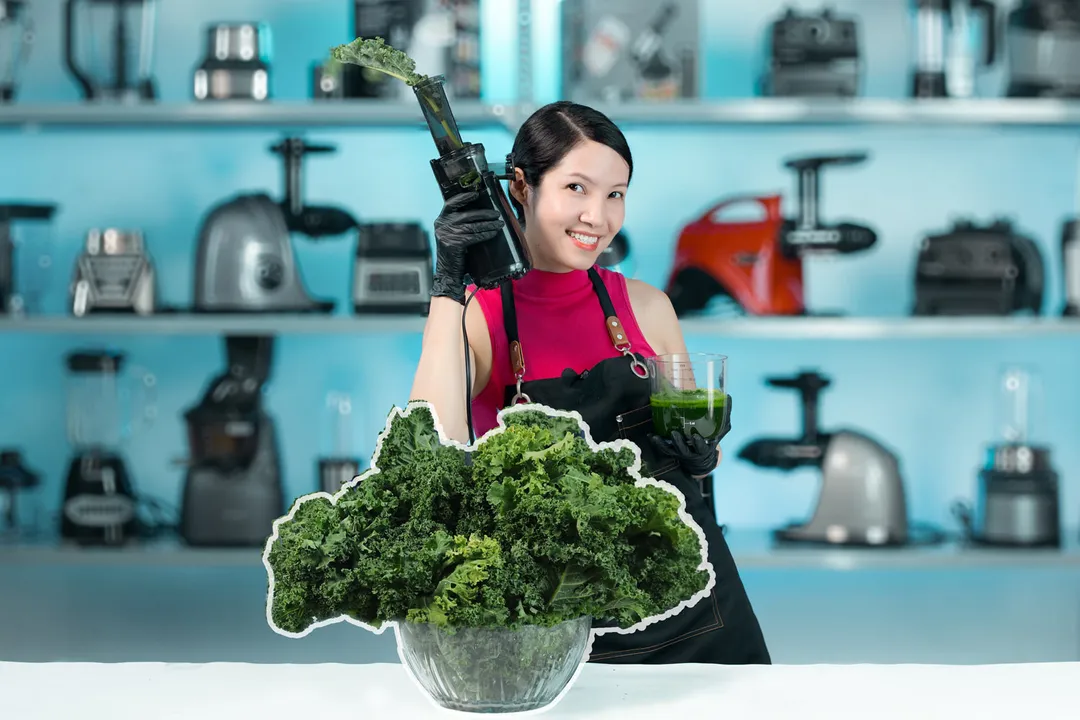
Extracting juice from leafy greens can be challenging due to their shape and texture. Leafy greens also tend to be low in sugar with an unappealing bitter taste. For better results, read our expert tips on juicing leafy greens. We share prep techniques and the secrets to crafting creative green juice combos that will leave you wanting more.
Technique
Leafy greens, such as kale, spinach, or Swiss chard typically have a low water content and are among the hardest things to juice. Their fibrous texture can also clog up some juicers, especially those with smaller feeding chutes. In addition, leafy greens also tend to be lightweight, and they may not provide enough pressure on their own for effectively processing in certain types of juicers.
So, what are the tricks?
Use a Masticating Juicer
Traditional centrifugal juicers, which rely on high-speed spinning blades, are not the most suitable for juicing fibrous greens. For the most part, you get very little juice, while the leaves end up torn, bruised, and shot into the pulp collector in large pieces.
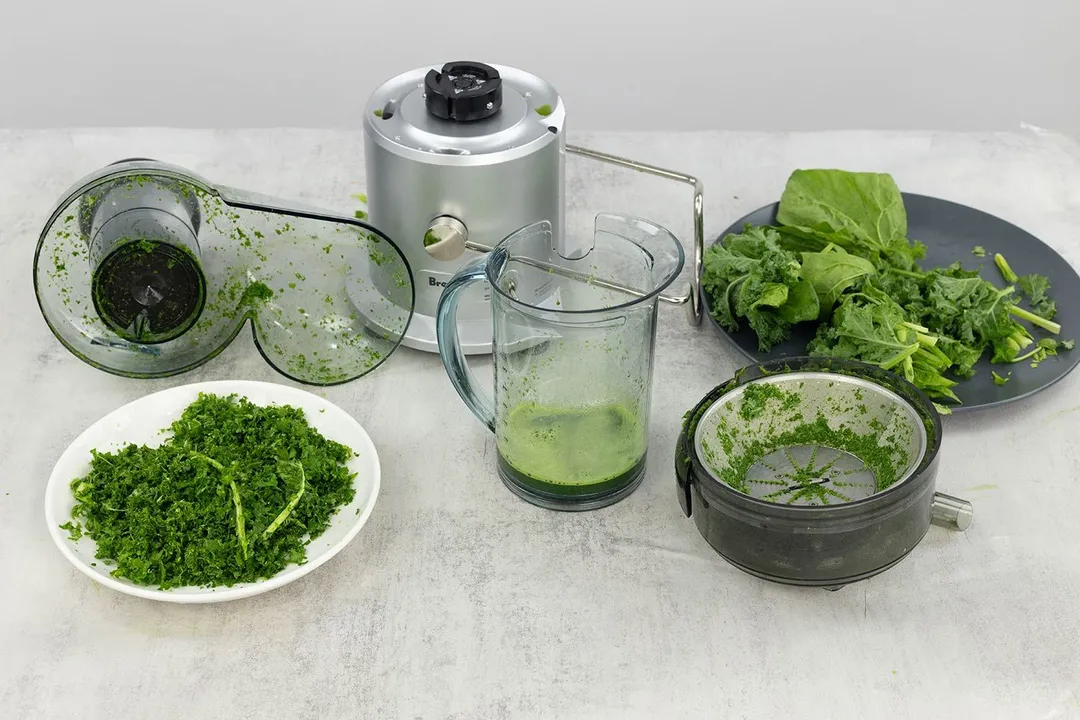
There are workarounds, but it’s best to use a masticating or cold-press juicer. These utilize high pressure to crush and squeeze the leaves. Juice yield will vary depending on leaf type and juicer model, but in our experience, you will almost certainly get more juice with a masticator than a centrifuge.

Roll It Up for a Tighter Squeeze
Leaves tend to be thin and loose, which makes it difficult to extract the juice. Whether you’re using a masticating or centrifugal juicer, a great tip is to roll up your leafy greens to mimic a small spring roll. This helps reduce looseness, creating a denser texture for the juicer to work on.
Go easy on the roll size, though, especially when juicing kale, or the leaves will stick to the wall of the feed chute and clog it.
Make an Herb Sandwich
Ask any juicing pro and they’ll tell you to place the leaves between the stalks. If you’re making a mixed juice, sandwich slices of more fleshy or crunchy vegetables between the leaves. This ensures the leaves are pulled through the juicer more smoothly, enhancing the overall juicing process.
Taste Tips
Whether you are a veteran or newbie at the juicing game, achieving the perfect taste can be a challenge. This is especially true with juicing leafy greens where there’s every chance of chaotic bitterness breaking through.
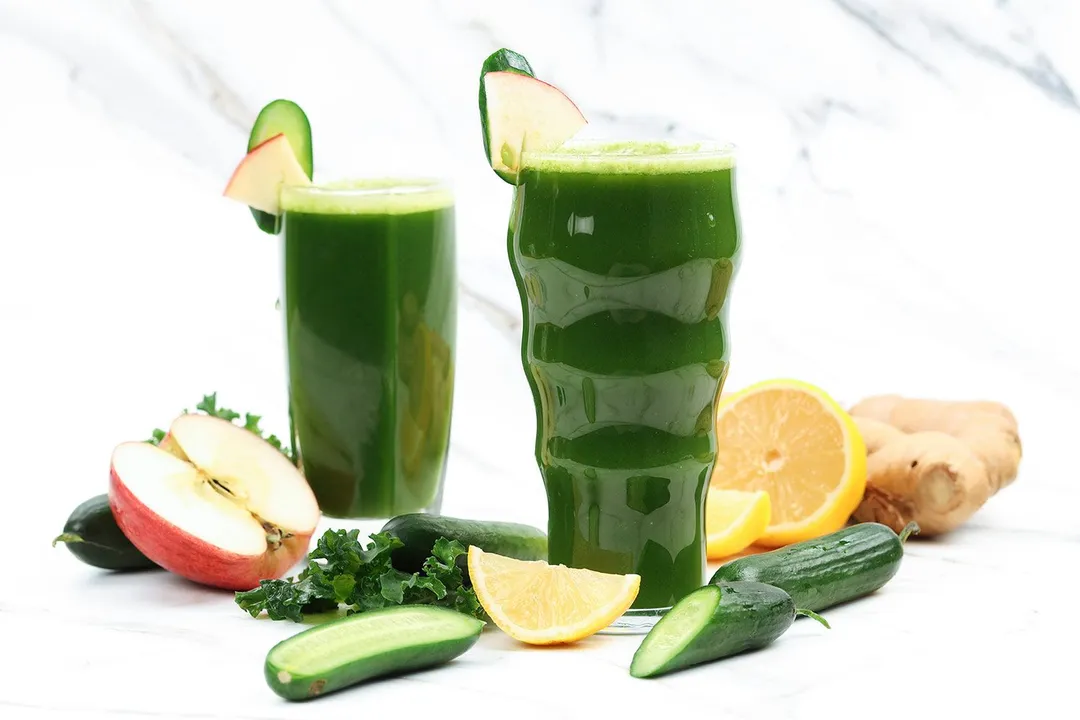
Having chef-tested green juice recipes handy is a great way to ensure you’ll always make the tastiest juice. But, if you’re feeling creative and want to experiment with your own recipes, here are a few taste tips.
Start With the Base
Like a cocktail, a good juice recipe needs a good base. A well-structured base not only adds volume but also helps achieve a smoother, more enjoyable consistency. It also balances the flavors of the juice. You can think of it as ‘watering down’, but it actually provides a neutral or slightly sweet foundation that complements possible bitter or earthy tastes.
As such, the base should be a high water content, mild flavor veggie. Iceberg, romaine lettuce, celery or, of course, cucumber all make great bases. If you want a fruity base, coconut water is a delicious option.
Pick the Star
Once you’ve sorted your base, it’s time to pick the primary ingredient for your juice. There are many healthy and tasty options: kale, broccoli, arugula, spinach, etc. These are dense in color, nutritious, and usually strong in flavor. If you’re new to juicing, we recommend going easy on the amount of greens, but increasing gradually as you acquire the taste or to the agreement of your digestive system.
Enhancers and Acidifiers
After selecting the base and primary juice, it's time to enhance (or tweak) the flavor.
For beginners, incorporating some sweet fruits such as pear, apples, or pineapples may help mask the bitter taste of the vegetables. If you’re into a tangy kick, introducing citrus fruits or acidic elements like lemon or lime may be a good idea. Flavor enhancers such as ginger, mint, or basil, meanwhile, can elevate the taste profile by offering depth and complexity to your drink. To add an extra burst of zest, think about throwing in a slice of fresh ginger.
About your tip
Anh Ngo is a writer with 9 years experience at different media outlets, covering from public news and events to product testing and analysis. At HealthyKitchen101, she works across different departments, communicating closely with its network of writers, editors, and health, tech, and search engine experts to provide a meaningful and pleasant reading experience for visitors.
Nguyen Ntk is a graphic designer, photographer, and videographer whose philosophy centers around respecting and celebrating the beauty of reality. Through his lenses, Nguyen strives to capture the true essence of objects and events, showcasing and highlighting authentic features without distortion or exaggeration.


